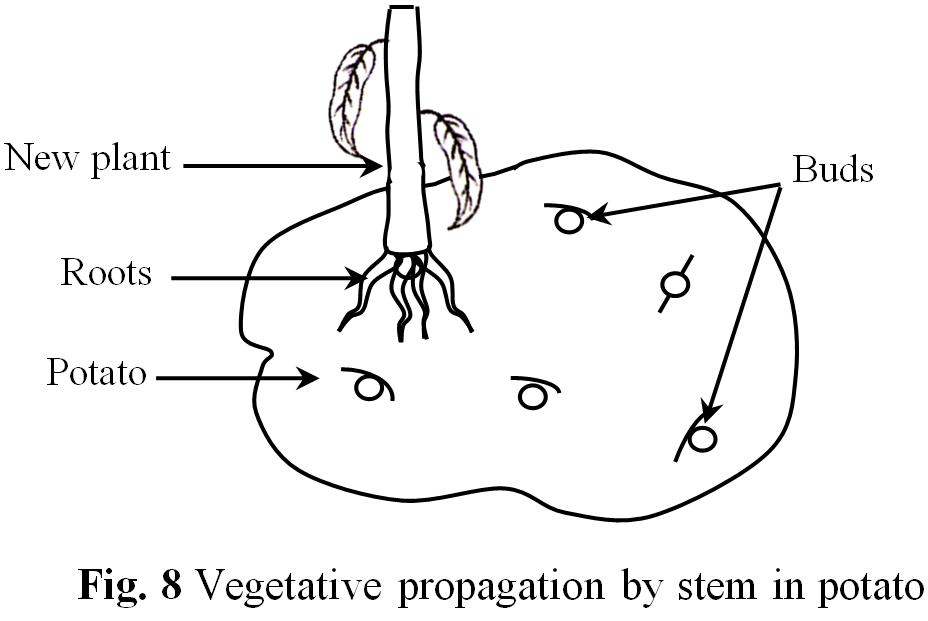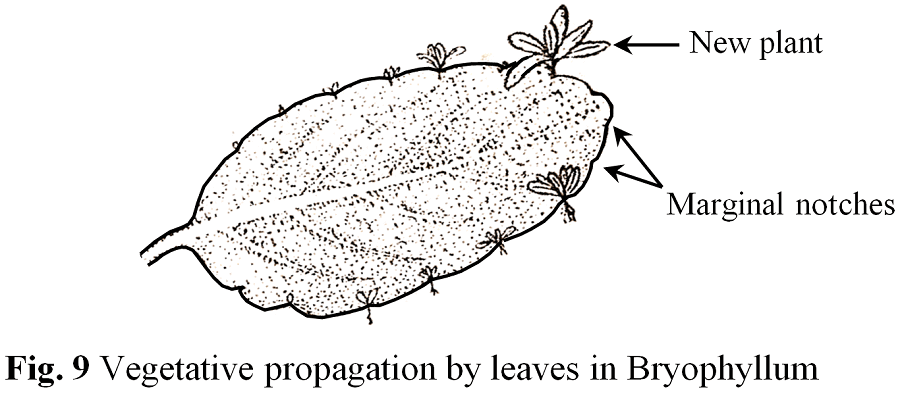Vegetative reproduction is the method of obtaining new plants from the parts (such as stems, roots and leaves) of an old plant, without any type of involvement of sex organs. Thus this method of reproduction is used in the production of higher plants from the vegetative parts of an old plant. This method of asexual reproduction is found in sweet potatoes, onion, guava, bryophyllum, potatoes and in banana.
The production of new plants from the parts of old plant can take place naturally or artificially. So we can classify vegetative propagation in two types.
1. Natural vegetative propagation
2. Artificial vegetative propagation
Natural vegetative propagation
Natural vegetative propagation can take place from the following parts of a plant.
1. Roots
2. Stem
3. Leaves
1. Vegetative propagation by roots
In some plants vegetative propagation can take place from roots. For example, in sweet potatoes the roots bear adventitious buds from which new plants can develop when it is buried in the moist soil. Such roots are called reproductive roots.
2. Vegetative propagation by stem
Vegetative propagation can take place from the stem in ginger and potatoes. In these plants the stem bear small outgrowths called buds. When a cutting of such a stem along with the bud is buried in the moist soil then a new plant develops from these buds.

3. Vegetative propagation by leaves
Vegetative propagation can also take place from the leaves. This method is found in plants such as Bryophyllum and Begonia.
Vegetative propagation by leaves in Bryophyllum
In the leaves of Bryophyllum meristamatic marginal notches are present. From these meristamatic tissues new plants can develop after coming in contact of soil. The new plants can detach from the leaves and develop into a full plant after falling on the ground.

Advantages of vegetative propagation
Following are the advantages of vegetative propagation.
- The new plants produced by vegetative propagation are exactly like the parent plant i.e. the new plants possess all characteristics of the parent plant.
- The plants produced by vegetative propagation grow rapidly.
- Desired varieties and qualities of fruits and plants can be produced by vegetative propagation.
- Those plants can also be produced by vegetative propagation which do not produce seeds or which cannot produce viable seeds.
- The desirable characters of a variety can be preserved indefinitely through vegetative reproduction.
Test Your Understanding and Answer These Questions:
- What do you mean by vegetative reproduction? Give its types.
- Explain vegetative propagation by leaves in bryophyllum.
- Name the plants which are grown by using their stems.
- Give the names of the different methods of natural vegetative reproduction.
- Name the plants which are grown by using roots.
- List two advantages of vegetative propagation.
- What are the various methods of vegetative propagation?
